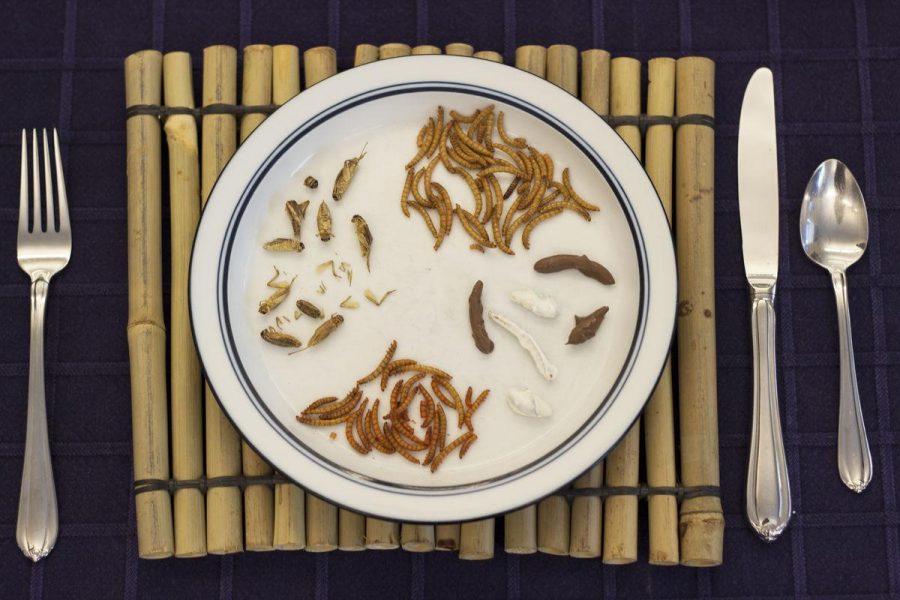Feeling like a sweet and salty snack with a little bit of crunch? How about some chocolate covered, salted crickets? Or perhaps something cold and creamy like toffee mealworms over Three Twins vanilla ice cream?
Both of these delicacies can be found on the menu of a local food stand called Don Bugito located in the Mission district of San Francisco.
Over 1,900 edible insect species are known to exist on Earth, and according to the United Nations Food and Agriculture Organization, new edible species continue to be discovered. In fact, over two billion people around the world incorporate insects into their regular diet, but there remains a negative social stigma remains about eating insects in the Western culture.
“Once people put it in their mouth and realize it’s really crunchy and yummy, they immediately convert,” said Monica Martinez, founder of Don Bugito.
What crawls in our food
We already eat insects hidden in our food every day. The United States Food and Drug Administration permits certain levels of contamination in our food because it is impossible to grow and process food products completely free of impurities such as bugs.
According to the FDA, an average of 60 fragments of insects can be found in a 100 gram piece of chocolate, as well as an average of over 20 maggots of any size per 100 grams of drained mushrooms. Food items must reach “food defect action levels” before the FDA recognizes a problem.
For example, there can be a maximum of 1,250 insect fragments per 10 grams of ground oregano and a maximum of 50 insect fragments in 100 grams of peanut butter.
According to Martinez, it is more harmful to human health to consume the pesticides found in our food as opposed to the naturally occurring insects found in our food.
Nutritional Value of insects
Although nutritional content varies depending on factors such as an insect’s stage of life and its manner of preparation, the FAO reports that insects continually produce high-quality protein and nutrients in comparison to fish and meat. Insects contain elevated levels of fiber, copper, iron, magnesium, manganese, phosphorous, selenium, and zinc.
“Insects don’t have cholesterol or saturated fats that you usually find in red meats,” Martinez said.
According to the FAO, insects can also provide undernourished children vital nutrients.
Although Westerners may have the impression that insects carry disease, Martinez pointed out that insects pose a lower risk of transmitting food-borne illnesses because they are so genetically different from humans. In fact, there are no known cases of human diseases or parasitoids resulting from the consumption of insects, provided that sanitary conditions are equally upheld to standards of other traditional foods, according the FAO.
Food-borne illnesses transmitted from the consumption of animals, such as E-coli and Salmonellosis, affect tens of millions of people and cost more than $9 billion in health care related costs each year, according to the United States Center for Disease Control and Prevention. Since most of these illnesses come from poor quality meat, poultry, and fish, a switch to a heavier diet of insects has the potential to lower these statistics.
Environmental Benefits
Joe Stewart, Redwood AP Environmental Science and Ecology teacher, stated that farming insects makes sense from an environmental viewpoint.
“The production of insects is more efficient. It takes ten times as much land to grow cow protein as it does to grow vegetable protein. It takes about three or four times as much land to grow chicken protein as to grow vegetable protein. With insects, it is much closer to one to one,” Stewart said.
Bugs also require less food, further reducing their environmental footprint. On average, insects have the potential to convert two kilograms of feed into one kilogram of body mass, whereas cattle require eight kilograms of feed to produce one kilogram of body mass, the FAO reported.
“Insects are everywhere and they reproduce quickly,” the FAO stated.
Martinez emphasized the minimized waste in farming insects.
“There’s no waste,” Martinez said. “We don’t eat the head of the cow or many parts of the cow that we dispose. With insects, we eat the whole thing.”
“It’s 99% less waste production from an insect farm than from a cattle farm,” said Martinez, before adding, “And they pretty much don’t drink water.”
Insects also naturally like to be crowded, explained Martinez. This trait is built into their genetic makeup as opposed to cows, chickens, and fish, which naturally require more space per individual. It makes farming insects more economically logical as well.
“Less water, less space, less waste,” Martinez said.
An Interesting Menu
Wax moth larvae tacos, salted cricket tostaditas, and toffee mealworm ice cream are three unique dishes regularly served at Don Bugito.
Monica Martinez, the creative mind behind this unique street food project, lunched her business in the Mission district two years ago in 2011.
“I wanted to challenge myself to introduce edible insects into the food market of the United States,” said Martinez.
Don Bugito’s packaged chocolate covered salted crickets and spicy superworms can be purchased at the La Cocina kiosk in the Ferry Building Marketplace, but the hot-dish food cart only appears at special events.
For over a year and a half before she began Don Bugito, Martinez designed miniature bug farms to grow edible mealworms and beetles. The indoor bug farms are cultivated in small Tupperware containers and meant to be easily accessible for a snack or meal.
Martinez said she moved to the US from Mexico, where eating insects is a big part of the culture as well as the regular diet. According to Martinez, edible insects are an answer to the global demand for protein rich foods.












